Contact Napping: What It Is & How to Transition Out of It

- Contact napping is when you have some sort of physical contact with your baby while they nap.
- It’s safe as long as the caregiver is well rested and remains awake.
- Contact napping comes with many benefits to include bonding, SIDS reduction, and better baby sleep quality.
- It’s easiest to start the transition around 3-4 months.
- The transition is best made when you prep, practice, choose a method, and time it right.
From birth you started contact napping, taking in the new baby smell and admiring all their tiny details. I don’t blame you—who can resist? Fast forward and now you’re quickly finding your baby isn’t so small anymore. Their naps on you aren’t quite what they used to be, and it almost feels like they’re getting bad sleep.
You know it’s time to make the transition to sleep independently but you’re not sure how. I get it. Changing your baby’s schedule is hard enough without the inevitable resistance. The bright side is there are simple steps to make this transition and plenty of benefits to back your choice to contact nap to begin with.
What is Contact Napping?
In short, contact napping is just like it sounds. You have some contact with your baby while they nap. This can look different from family to family. For example, some may choose the traditional rocking with their baby in arm. Others may contact nap with their baby lying on their chest.
For me, I could even get a contact nap in while my baby boy was tethered to me in his baby carrier. Now that was the best of both worlds; I had a content baby napping while I strolled the aisles of Target, latte in hand. Whatever your method of choice, if your baby is napping on you, you’re practicing contact napping.

Is Contact Napping Safe for Babies?
Here’s the good news: contact napping is safe! Every parent knows how important a safe sleep space is for babies. I know this concept was drilled into my head when I was a new mom for a good reason. Luckily, contact napping is safe so long as your baby’s face is clear of any obstruction.
The bad news: you can’t sleep on the job for contact napping to remain safe. You have to stay awake! If not, you risk many of the same injuries common with bed-sharing, including suffocation, crush wounds, falls, and the like.
From one bleary-eyed parent to another, I realize staying awake can be a tall order! Before letting your baby start a contact nap on you, self-evaluate. If you’re feeling sleepy, it’s best to hand your baby to a more rested caretaker or opt for the crib.
Benefits of Contact Napping
Contrary to popular belief, letting your baby take naps on you isn’t a bad habit. There are quite a few noteworthy benefits that prove otherwise! Contact napping can:
- Strengthen bonding. It’s no surprise that these sweet nap snuggles help to reinforce an unbreakable bond. This is not only true for mom but dad too! Contact napping, especially skin-to-skin, can help regulate hormones and heartbeat. These hormones in particular (endorphins being one of them) aid in the emotional bond.
- Reduce the risk of SIDS. While SIDS is a scary reality to consider, it can be vastly reduced by circumstance. Studies show sudden infant death syndrome prevention is rooted in your baby sleeping safely near an adult. This can include a contact nap so long as the caregiver is well rested.
- Improve sleep quality. Many parents will note that their babies seem to nap better and stay asleep longer when contact napping versus in their crib. Well they’re not just imagining it! There are many reasons this could be taking place, including warmth, the sound of your heartbeat, or your smell. Remember, you’re all they know!
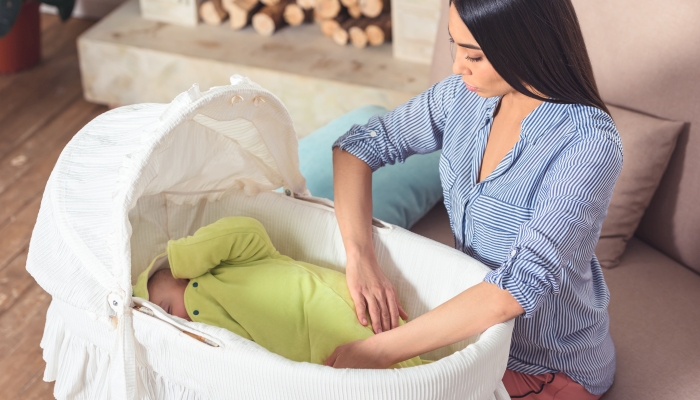
When To Stop Contact Napping
While there’s no magic number to wean off contact naps, it seems that between 3-4 months is the sweet spot. At this point they’re officially out of the newborn sleep stage with longer wake windows. Though not too far into their infancy to be too immalleable, the sooner you start the easier it’ll be.
Many parents find themselves hesitant at the idea of contact napping; they are worried about creating long term sleep associations. While it’s a fair concern, it’s no reason to avoid contact napping altogether. Ensuring you stop contact naps when the time is right helps avoid problems later on.
Guide on How to Transition Your Child Out of Contact Naps
You’ve spent the newborn phase (and maybe even longer) enjoying the sweet cuddles of your baby but now it’s time for a change. You’re looking for some freedom or perhaps just some time to wash your hair! Enter the dreaded obstacle of transition, which us parents are faced with many times in child-rearing.
This one is even less fun if your baby won’t sleep in their crib for naps (or any other time for that matter). It’s all good though! Follow these 4 main guidelines below for a smooth changeover:
- Prep: Start with prepping your baby’s sleep space and room. Be sure the temperature is somewhere between 68 and 72 degrees fahrenheit. Turn on white noise; keep the volume not too high or low. Double check that their crib is clear of items. Also, black out curtains will help regulate the amount of light coming in for nap times.
- Practice: Starting new things is challenging for everyone and babies are no exception. You’ll find more success if you start by getting your baby used to their new sleep space. Try laying them down in their crib with a fun toy or an interesting mobile to look at overhead. The more familiarity they have the more seamless the transition will be.
- Method: Choosing the soothing method that’s right for you is an important step in the success of this process. Whether you’re cool with some crying or you need a bit more of a gentle sleep training method, you can do this! Whatever you pick you’ll want to be sure it’s something you can be consistent with.
- Timing: Ideally, you want to put your baby down for their nap when they’re sleepy not asleep. Easier said than done when they’re used to sleeping in your warm embrace and not a crib. If you find that it’s too much too soon then try letting them fall asleep first. Then put them down in their own room when they’re fully asleep. Small steps are okay too!
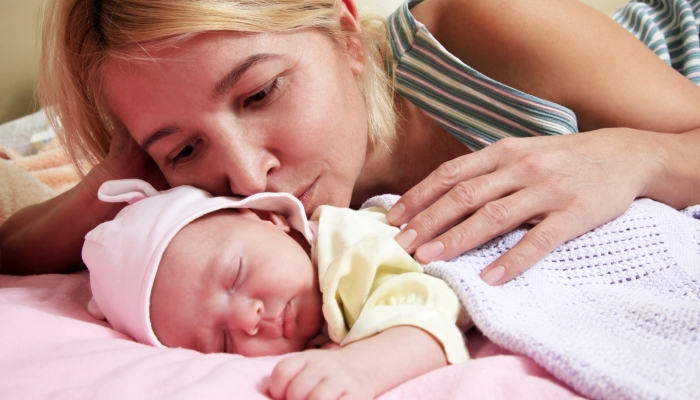
FAQ
Won’t contact naps spoil my baby?
This is a common concern among new parents especially when the standard narrative is to teach independence ASAP. As any parent comes to find, those first moments are fleeting; it’s more than okay to soak it in. Contact naps will not spoil your baby—all they know is you. They need you close while they adjust to their new life outside the womb.
How many contact naps a day is appropriate?
This really comes down to personal preference. As a general rule, newborns usually take between 6 and 8 naps. As time progresses they move toward 4 to 5 naps around three months or so. Whether you choose only contact napping or a mixture of both is up to you.
For me, I used a mixture of both with my daughter. It really helped give me the break I needed. When the beginning of the pandemic hit, my son was born and my husband’s job moved to remote. Between the two of us we were able to strictly contact nap with him.
What is a nap time routine and how can it help the transition?
Much like a bedtime routine, a nap time routine is a simple but great tool to getting your little one to sleep. Basically, it acts as their “cue” that nap time is here. The earlier you establish this routine the sooner your child will catch on. That cue will stick with them as time progresses and their little brain will recognize this routine means it’s time for a nap.
Don’t get caught up in the details though. A routine doesn’t need to be fancy to be noticeable. For instance, when my kids were babies I’d start by putting them in their sleep sack.
Then I’d take them into the nursery and turn on white noise while I rocked them, bringing their senses into a quiet and calm environment. Then when they started getting drowsy I’d lay them down to fall asleep on their own.
When will I find time to do anything with a sleeping baby attached to me?
A great question with an answer unlikely to please. The truth is you really can’t get much done with a sleeping baby on your chest all day. While I know firsthand how frustrating that can be, laundry piling up and a list of to-dos a mile long, it’s not forever. Keep in mind it’s just a season.
In the mean time be sure to ask for help. Let friends and family give you breaks as needed so you can avoid the feeling of being over-touched. Let them bring meals, clean, whatever it may be. Any task that makes your day to day easier will take the stress off of you as you focus on your newborn.
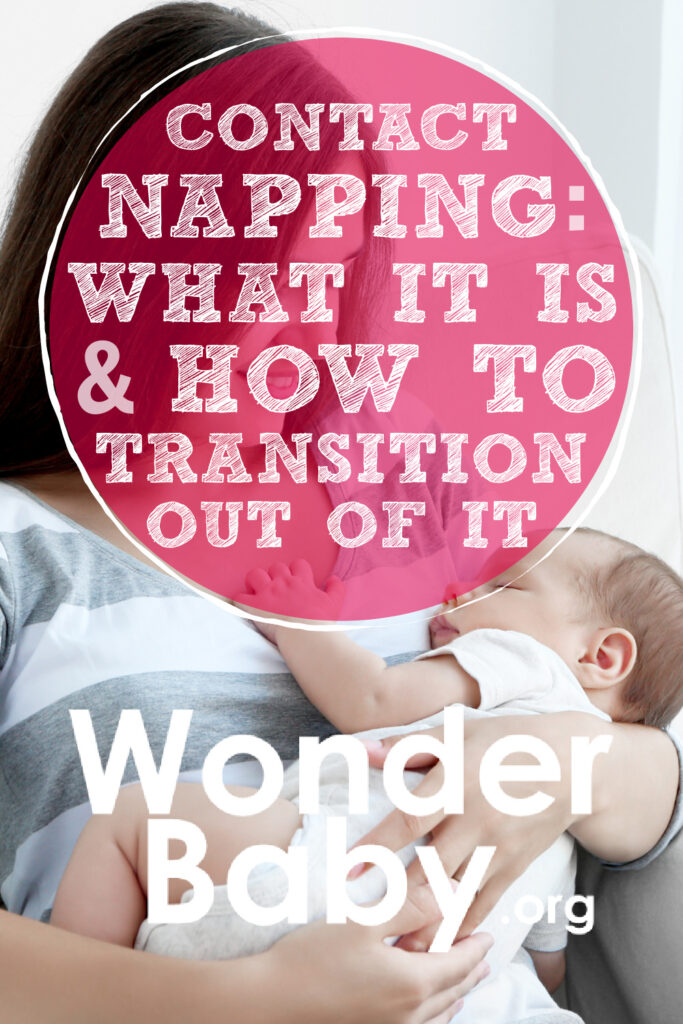
Related Posts
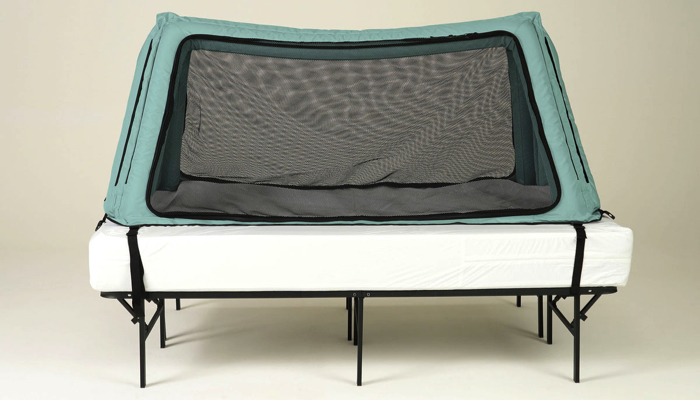
Sleep, Special Needs
Safe Place Bedding Travel Bed Review
Traveling with a special needs child can be stressful! Having a safe, durable, and easy to use travel bed can make traveling so much easier!
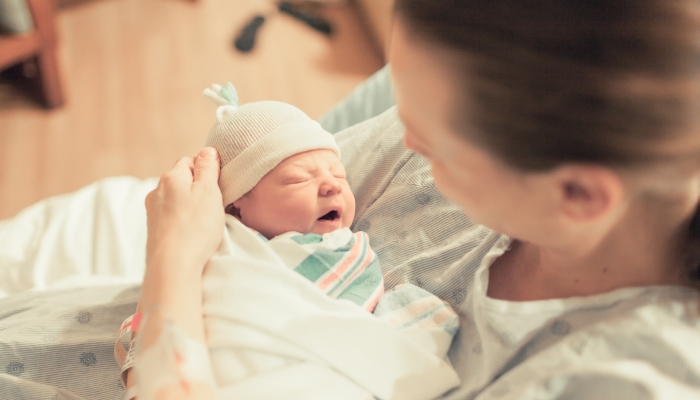
Sleep, Special Needs
Sleep Regimen for Premature Babies: Special Considerations
It can take premature babies much longer than their full-term peers to sleep for long stretches. A preemie sleep schedule may encourage better sleep.
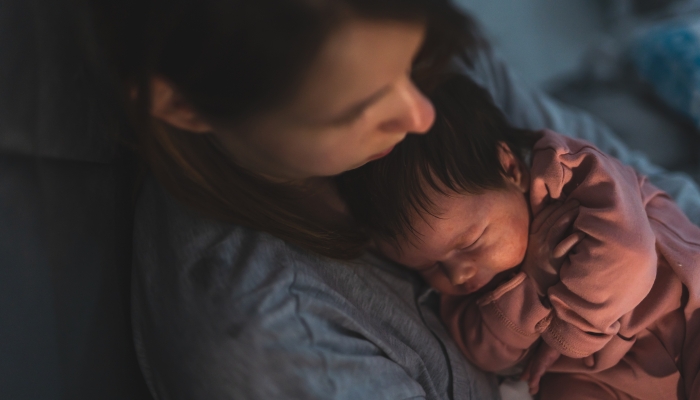
Sleep
Mastering the Bedtime Routine: 3 Tips for a Peaceful Night’s Sleep
From around six weeks, a newborn bedtime routine can help your baby learn the difference between day and night and prepare for a restful night’s sleep.